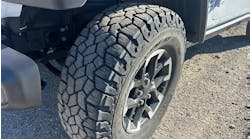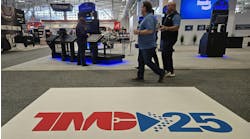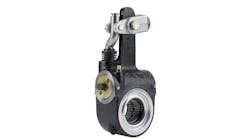For years, through voluntary partnerships and incentives that support clean diesel projects, the U.S. Environmental Protection Agency (EPA) (www.epa.gov) has worked with the trucking industry to accelerate the use of fuel-saving and emissions-reduction technologies. These programs, in tandem with environmental regulations, create a multi-faceted approach to accomplish the agency's mission of protecting lives and the environment while encouraging clean, efficient transportation.
One such voluntary partnership, launched in 2004, is the EPA SmartWay Program. It is a market-driven partnership to improve fuel efficiency and sustainability in goods movement (www.epa.gov/smartway). Since then, more than 3,000 SmartWay partners - including Fortune 500 shippers from every major business sector, top trucking firms, major logistics companies, multimodal carriers and rail companies - have eliminated 28 million metric tons of carbon dioxide, plus saved 65 million barrels of oil and $8.1 billion in fuel costs, say officials at the EPA's Technology Assessment Center (TAC).
SmartWay is akin to the Energy Star Program established by the U.S. Department of Energy and the EPA in 1992. A voluntary program, it identifies and promotes energy-efficient products and buildings in order to reduce energy consumption, improve energy security and reduce pollution through voluntary labeling of or other forms of communication about products and buildings that meet the highest energy efficiency standards.
SmartWay freight providers use fuel saving operational practices and EPA-verified technologies to cut fuel costs and emissions, explain TAC officials. Retailers, manufacturers and others use SmartWay performance metrics to identify and select carriers and modes, then incorporate this information into their carbon accounting and sustainability plans.
By providing businesses with consistent and integrated tools and approaches, SmartWay enables companies across the supply chain to exchange performance data in ways that protect the environment, enhance the nation's energy security and foster economic vitality, they add. To encourage continued improvement, SmartWay provides incentives and recognition for top performers through EPA's SmartWay Excellence Awards.
These honor top truck, intermodal and rail carrier partners that are setting efficiency benchmarks in how they move products and supplies. Top shipping and logistics partners also are recognized for efficiency and their actions to reduce freight emissions through effective collaboration, advanced technology and operational practices.
THE FIVE COMPONENTS
SmartWay is comprised of five components:
1. SmartWay Transport Partnership - A partnership in which freight carriers and shippers commit to benchmark operations, track fuel consumption and improve performance annually.
2. SmartWay Technology Program - It develops test protocols, reviews strategies and verifies the performance of vehicles, technologies and equipment that have the potential to reduce greenhouse gases and other air pollutants from freight transport and establishes credible performance criteria.
The EPA evaluates the fuel-saving benefits of various devices through grants and has determined the following types of SmartWay Verified Technologies provide fuel saving and/or emission reducing benefits when used properly in their designed applications:
Idle Reduction Technologies - These allow vehicle operators to refrain from long-duration engine idling by using an alternative technology to provide heating, air conditioning and/or electricity to the vehicle that would otherwise require running the engine while the vehicle is parked. EPA-verified idle reduction technologies include:
- Electrified parking spaces/truck stop electrification.
- Shore connection systems.
- Auxiliary power units and generator sets.
- Fuel-operated heaters/direct-fired heaters.
- Battery air conditioning systems.
- Thermal storage systems.
- Automatic shut-down/start-up systems.
Certain idle reduction technologies may be eligible for Diesel Emission Reduction Act Grants and the Federal Excise Tax Exemption. For information, visit www.epa.gov/smartway/technology/excise-tax.htm.
Verified Aerodynamic Technologies - These minimize drag and improve air flow over the entire tractor trailer. Aerodynamic technologies designed for use on a standard 53' van (box) trailer in long-haul operations include:
- Gap fairings that reduce turbulence between the tractor and trailer.
- Side skirts that minimize wind under the trailer.
- Rear fairings that reduce turbulence and pressure drop at the rear of the trailer.
Combining aerodynamic devices that achieve at least 5 percent fuel savings with EPA-verified low rolling resistance tires qualifies a 53' van trailer for SmartWay designation when used in conjunction with an aerodynamic Class 8 tractor for long-haul operation, say TAC officials.
Low Rolling Resistance Tires and Retreads - The EPA has determined that certain tire models, as well as certain retread technologies, can reduce NOx emissions and fuel use by more than 3 percent, relative to the best-selling new tires and retread technologies, respectively, for line-haul Class 8 tractor trailers. While a fleet's in-use results vary, recent EPA testing indicates that EPA-verified low rolling resistance tires and retreads may obtain even greater fuel economy benefits under constant highway-speed cruise operations.
The conditions under which fuel-saving improvements can be had, along with a list of SmartWay verified low rolling resistance tires and retreads, can be found at www.epa.gov/smartway/technology/tires.htm#tires.
Retrofit Technologies - A list of retrofit technologies verified by EPA, such as diesel oxidation catalysts and diesel particulate filters, is available at www.epa.gov/cleandiesel/verification/verif-list.htm.
Manufacturers seeking aerodynamic device verification must conduct track testing using the joint fuel consumption test protocol developed by the Technology & Maintenance Council and the Society of Automotive Engineers as modified by EPA. As with tire verification, the testing is conducted by the manufacturer at their expense, note TAC officials.
By design, the process typically results in EPA and the manufacturer working cooperatively to minimize the manufacturer's burden while meeting the verification program requirements, they add.
EPA-verified tires, aerodynamics and idle reduction systems can be used to meet the agency's performance requirements to earn designation as a SmartWay Tractor or a SmartWay Trailer. This is a mark that identifies the top fuel-saving performers for fleets.
Among the manufacturers that offer an EPA-designated SmartWay Tractor are Daimler Trucks, Kenworth, Mack, Navistar, Peterbilt and Volvo Trucks. EPA-designated SmartWay Trailers can be ordered from Great Dane, Hyundai Translead, Manac, Stoughton, Strick, Utility, Vanguard, Wabash and Wilson.
3. SmartWay Vehicles - This program ranks light duty cars and small trucks and identifies superior environmental performers with the SmartWay logo.
4. SmartWay Finance Program - A competitive grant program that makes investing in fuel-saving equipment easier for freight carriers.
5. SmartWay International Interest - Guidance and resources for countries seeking to develop freight sustainability programs modeled after SmartWay.
TECHNOLOGY ASSESSMENT CENTER
The EPA created its TAC because of numerous inquiries from fleets, equipment manufacturers and others in the trucking industry interested in innovative technologies and strategies to improve fuel economy and reduce emissions, say TAC officials. The organization integrates expertise from SmartWay and National Clean Diesel technology programs (www.epa.gov/cleandiesel), provides a comprehensive approach to reducing emissions from heavy duty fleets and overseas research, test and evaluation of emission and fuel-saving technologies and strategies.
The TAC verifies technologies by reviewing manufacturer information and test results, developing industry-leading test protocols and conducting research to address technology barriers, they say. It also tests currently available and advanced technologies to evaluate their new and in-use performance.
Because each fleet's operations are unique, fleets must apply what they know about their own operational conditions, driver behavior, maintenance practices and performance needs to understand how technologies will most benefit them, TAC officials point out.
For more information on EPA's Technology Assessment Center, send an e-mail to: [email protected].




